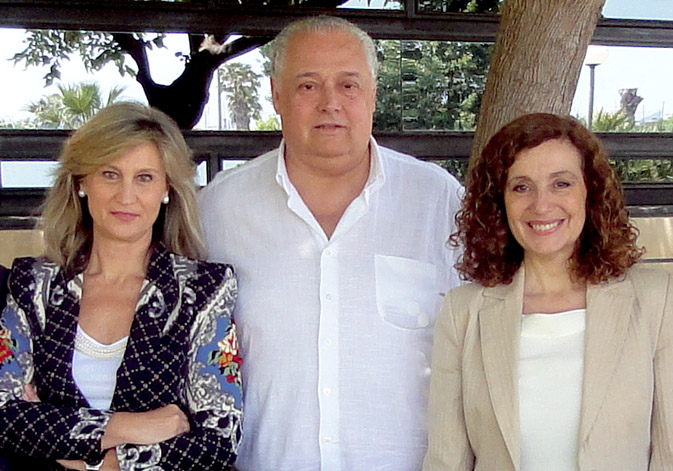The Health Parasitology Team of the Universitat describes for the first time all the possible routes of human infection of the fasciolosis
- Scientific Culture and Innovation Unit
- September 10th, 2018

The Health Parasitology Team of the Universitat de València has described for the first time all the possible routes of human infection of the fasciolosis. It is an emerging parasitic disease that is estimated to affect 17 million people in the World. It has been published by a team of the OMS and FAO/United Nations in the magazine Parasitology (has been chosen article of the month by Cambridge Media) and details the routes of infection, the diversity, the factors of impact and the methods of study of the disease.
This disease is caused by the parasite Fasciola hepatica, also known as common liver fluke. It is transmitted by freshwater snails and is very sensible to climate and global changes. It is very pathogenic among humans and cause a high morbidity that can became deadly. The work, financed by the Spanish Agency of International Cooperation and Development (AECID) and the Universitat de València, includes 64 coloured photographies that are significant to the comprehension of the heterogeneity of this disease in different endemic zones and countries.
The parasitology team of the Universitat is formed by Santiago Mas-Coma, María Dolores Bargues and María Adela Valero. They are professor of Parasitology in the academic institution.
Santiago Mas-Coma, co-director of the research as expert of the WHO, pointed out that until that moment he was not able to understand the great heterogeneity of the fasciola infection among humans. The article permits to explain for the first time the difference between human and animal fasciolosis, as well as the incredible capacity of the parasite to adapt.
The article explains the different measures of individual protection to prevent the infection and the general control measures that must be implemented by the health authorities at local, regional and national levels. The latter aspect includes several legislative proposals of local, national and international law. They do not only concern national administrations, but also supranational organisms and institutions.
María Dolores Bargues, highlights “the efforts that have been conducted in those areas in all the globe where the disease affected children. Sometimes the efforts have been carried out under hard conditions such as in the Bolivian Altiplano (4,000 metres of altitude). It has also been hard to search vector snails in highly urbanized areas such as Hong Kong.”
María Adela Valero pointed out the huge problems that the experimental study of the disease in a laboratory entails. This is because the parasite has a long cycle of life. The impossibility to work in vitro forces the use of unconventional models such as sheep and this causes difficulties.
Santiago Mas-Coma remembers “the long journey that has been walked to arrive to these conclusions. We started in Bolivia and after going around the entire globe we have returned to Bolivia. The Bolivian Altiplano is the perfect hyperendemic area to obtain models of study to fight against this disease. We made it between 1992 and 1997 and extrapolated it to the rest of the globe. We did it once again between 2007 and 2008, and now between 2018 and 2019.”
The article includes results obtained by the research team of the Universitat de València in different expeditions to endemic areas in America, Europe, Africa and Asia for 30 years. This international initiative has been carried out under the institutional protection of the World Health Organization (WHO, Headquarters in Geneva), the International Atomic Energy Agency (IAEFA, Headquarters in Vienna) and the Food and Agriculture Organization (FAO/UN, Headquarters in Rome).
Article published in Parasitology: http://ir.uv.es/HidGFp0
Blog post in Cambridge Media: http://ir.uv.es/X6vVbZV
Article in the web page of the OMS: http://ir.uv.es/610gQCQ
















